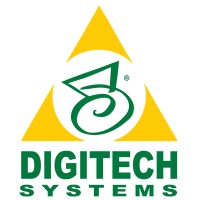The Rise of AI in Laboratory Informatics: A New Era of Efficiency and Innovation
April 1, 2025, 4:22 pm

Location: United States, Colorado, Greenwood Village
Employees: 11-50
Founded date: 1997
In the world of laboratory informatics, change is the only constant. As technology evolves, so do the tools that scientists and researchers rely on. The latest breakthrough comes from Semaphore Solutions, which has unveiled an AI-powered workflow configuration co-pilot for its Labbit platform. This innovation promises to revolutionize how laboratories configure and manage their workflows, making them faster, smarter, and more intuitive.
Imagine a world where laboratory workflows can be configured with the ease of a conversation. This is the vision that Semaphore Solutions is bringing to life. The AI-powered co-pilot acts like a seasoned guide, helping users navigate the complexities of laboratory processes. No longer do labs need to rely on specialized expertise or costly vendor support. With this tool, anyone can adapt workflows to meet their evolving needs.
At the heart of this innovation is the synergy between Labbit’s Business Process Model and Notation (BPMN) workflow engine and an AI assistant. Users can describe their lab processes in natural language or upload existing documents. The co-pilot then generates a visual representation of the workflows, transforming complex tasks into manageable steps. It’s like having a personal assistant who understands the intricacies of laboratory operations.
This co-pilot doesn’t just simplify the configuration process; it accelerates it. Traditional methods of workflow configuration can be cumbersome and time-consuming. With the AI co-pilot, labs can implement changes in real-time, reducing implementation timelines significantly. This agility is crucial in a field where speed can mean the difference between success and failure.
The implications of this technology extend beyond mere convenience. As laboratories grow and evolve, they face increasing pressure to adapt quickly. The AI-powered co-pilot empowers labs to make iterative changes without the need for extensive training or support. It democratizes the configuration process, allowing more team members to contribute to workflow design and implementation.
But Semaphore Solutions isn’t the only player in the AI landscape. At KubeCon + CloudNativeCon Europe, Kubiya introduced its Enterprise AI Stack for Agents. This platform is designed to help organizations build, manage, and deploy AI agents at unprecedented speeds. It shifts the focus from time-to-automation to time-to-production, addressing a critical pain point in the development of agentic applications.
Kubiya’s platform combines enterprise-grade security with multi-environment orchestration. This means that developers can create and manage AI agents within a unified environment, streamlining the entire process. The result? A more efficient workflow that allows teams to focus on innovation rather than getting bogged down in technical hurdles.
The launch of these AI-driven tools signals a significant shift in the laboratory and enterprise landscapes. Both Semaphore Solutions and Kubiya are addressing the same fundamental challenge: how to harness the power of AI to improve efficiency and drive innovation. Their solutions are not just about automation; they are about creating a new paradigm for how work gets done.
In the past, automation often required more human effort. This paradox has stifled progress in many organizations. However, with the introduction of these AI tools, the narrative is changing. Companies can now deploy intelligent systems that work seamlessly alongside human teams, enhancing productivity without adding to the workload.
The benefits of these innovations are already being realized. For instance, Kubiya’s platform has enabled companies to reduce developer SLAs for infrastructure access from three days to just one hour. This kind of efficiency is a game-changer, allowing organizations to respond to market demands with agility and precision.
As laboratories and enterprises embrace these AI advancements, the future looks bright. The integration of AI into workflow configuration and management is not just a trend; it’s a fundamental shift in how work is approached. The ability to adapt quickly and efficiently will become a hallmark of successful organizations.
In conclusion, the rise of AI in laboratory informatics and enterprise applications is ushering in a new era of efficiency and innovation. Semaphore Solutions and Kubiya are leading the charge, providing tools that empower users to take control of their workflows. As these technologies continue to evolve, they will redefine the landscape of work, making it more accessible and responsive to the needs of the modern world. The future is here, and it’s powered by AI.
Imagine a world where laboratory workflows can be configured with the ease of a conversation. This is the vision that Semaphore Solutions is bringing to life. The AI-powered co-pilot acts like a seasoned guide, helping users navigate the complexities of laboratory processes. No longer do labs need to rely on specialized expertise or costly vendor support. With this tool, anyone can adapt workflows to meet their evolving needs.
At the heart of this innovation is the synergy between Labbit’s Business Process Model and Notation (BPMN) workflow engine and an AI assistant. Users can describe their lab processes in natural language or upload existing documents. The co-pilot then generates a visual representation of the workflows, transforming complex tasks into manageable steps. It’s like having a personal assistant who understands the intricacies of laboratory operations.
This co-pilot doesn’t just simplify the configuration process; it accelerates it. Traditional methods of workflow configuration can be cumbersome and time-consuming. With the AI co-pilot, labs can implement changes in real-time, reducing implementation timelines significantly. This agility is crucial in a field where speed can mean the difference between success and failure.
The implications of this technology extend beyond mere convenience. As laboratories grow and evolve, they face increasing pressure to adapt quickly. The AI-powered co-pilot empowers labs to make iterative changes without the need for extensive training or support. It democratizes the configuration process, allowing more team members to contribute to workflow design and implementation.
But Semaphore Solutions isn’t the only player in the AI landscape. At KubeCon + CloudNativeCon Europe, Kubiya introduced its Enterprise AI Stack for Agents. This platform is designed to help organizations build, manage, and deploy AI agents at unprecedented speeds. It shifts the focus from time-to-automation to time-to-production, addressing a critical pain point in the development of agentic applications.
Kubiya’s platform combines enterprise-grade security with multi-environment orchestration. This means that developers can create and manage AI agents within a unified environment, streamlining the entire process. The result? A more efficient workflow that allows teams to focus on innovation rather than getting bogged down in technical hurdles.
The launch of these AI-driven tools signals a significant shift in the laboratory and enterprise landscapes. Both Semaphore Solutions and Kubiya are addressing the same fundamental challenge: how to harness the power of AI to improve efficiency and drive innovation. Their solutions are not just about automation; they are about creating a new paradigm for how work gets done.
In the past, automation often required more human effort. This paradox has stifled progress in many organizations. However, with the introduction of these AI tools, the narrative is changing. Companies can now deploy intelligent systems that work seamlessly alongside human teams, enhancing productivity without adding to the workload.
The benefits of these innovations are already being realized. For instance, Kubiya’s platform has enabled companies to reduce developer SLAs for infrastructure access from three days to just one hour. This kind of efficiency is a game-changer, allowing organizations to respond to market demands with agility and precision.
As laboratories and enterprises embrace these AI advancements, the future looks bright. The integration of AI into workflow configuration and management is not just a trend; it’s a fundamental shift in how work is approached. The ability to adapt quickly and efficiently will become a hallmark of successful organizations.
In conclusion, the rise of AI in laboratory informatics and enterprise applications is ushering in a new era of efficiency and innovation. Semaphore Solutions and Kubiya are leading the charge, providing tools that empower users to take control of their workflows. As these technologies continue to evolve, they will redefine the landscape of work, making it more accessible and responsive to the needs of the modern world. The future is here, and it’s powered by AI.
